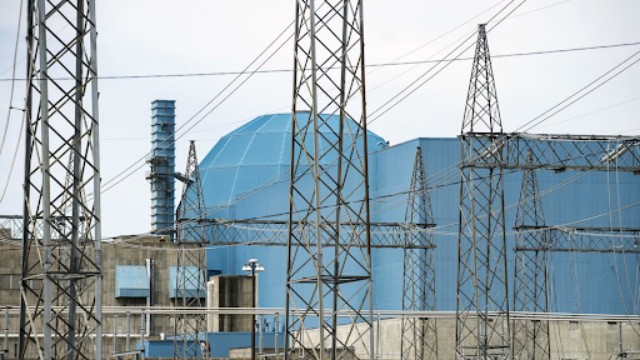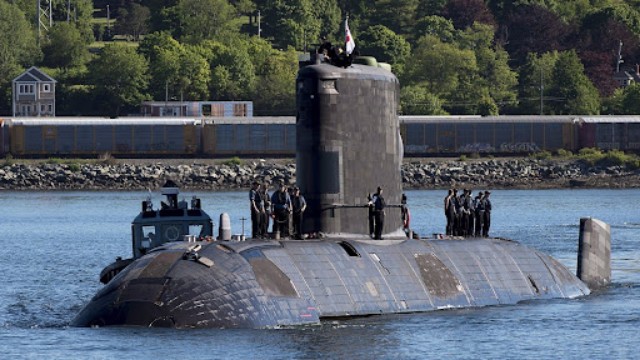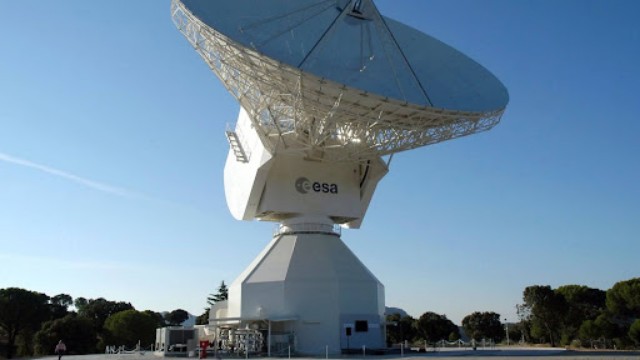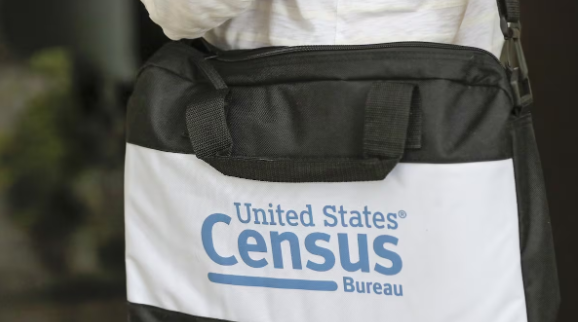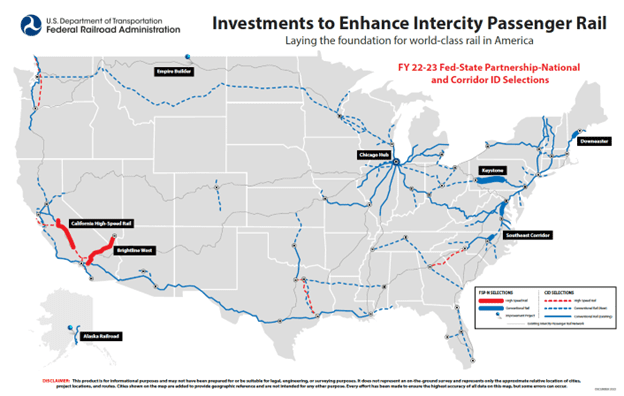
President Biden reveals an allocation of $8.2 billion in fresh grants for high-speed rail and a series of projects across the nation. (US Department of Transportation)
The U.S. Department of Transportation's Federal Railroad Administration (FRA) recently unveiled a monumental $8.2 billion allocation for 10 passenger rail initiatives across the nation. Alongside this announcement, the FRA introduced corridor planning initiatives that will influence every region of the United States. This significant investment in America's intercity passenger rail network, combined with a previously announced $16.4 billion allocation for 25 projects along the country's busiest rail corridor, brings the Biden-Harris Administration's total investments in the nation's rail system to nearly $30 billion.
Through the Federal State Partnership for Intercity Passenger Rail (Fed-State National) Program, the FRA will propel two high-speed rail corridors and fund enhancements to existing rail routes for improved service and efficiency. The planned investments aim to:
Introduce high-speed rail service in California's Central Valley.
Establish a new high-speed rail route connecting Las Vegas, Nevada, and southern California, anticipated to accommodate approximately 11 million passengers annually.
Execute major upgrades to current conventional rail corridors to better link Northern Virginia and the Southeast with the Northeast Corridor.
Expand and enhance service frequencies along the Pennsylvania Keystone Corridor, spanning from Philadelphia to Pittsburgh.
Extend the Piedmont Corridor in North Carolina northward, contributing to a higher-speed link connecting Raleigh and Richmond, Virginia.
Invest in the initial phase of improvements for Chicago Union Station, serving as a precursor to future enhancements in the crucial Midwest corridors hub.
Upgrade services in Maine, Montana, and Alaska.
Transportation Secretary Pete Buttigieg underscored the significance of this move, stating, "Today, the Biden-Harris Administration takes another historic step to deliver the passenger rail system that Americans have been calling for – with $8.2 billion for faster, more reliable, expanded train service across the country."
Moreover, the FRA revealed 69 corridor selections across 44 states through the Corridor Identification and Development (Corridor ID) Program. Enabled by President Biden's Bipartisan Infrastructure Law, Corridor ID aims to steer future passenger rail expansion and development. This inaugural set of selections targets upgrading 15 existing rail routes, adding or extending service on 47 new routes, and advancing 7 new high-speed rail projects, forming a pipeline of intercity passenger rail projects prepared for implementation and forthcoming investment.
Administrator Amit Bose of the FRA emphasized the transformative potential of these initiatives, stating, "President Biden’s Bipartisan Infrastructure Law gave us a once-in-a-generation opportunity to think smart and think big about the future of rail in America, and we are taking full advantage of the resources we have to advance world-class passenger rail services nationwide."
The Corridor ID program encompasses a range of planning and development endeavors, including new high-speed rail service in the Cascadia High-Speed Rail Corridor, proposed services between Dallas and Houston, and the enhancement of Midwest Chicago hub corridors, among various others.
This strategic and significant investment reflects the Biden-Harris Administration's commitment to fostering a safe and modern rail network for the American populace, underscoring the most substantial investment in passenger rail since Amtrak's inception.


